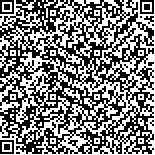| 引用本文: |
江智豪,胡燕,王孟清,丁伊,邓弈駃,邓梦婷.五虎汤通过干预炎症记忆对咳嗽变异性哮喘小鼠的治疗作用[J].湖南中医药大学学报,2021,41(4):512-517[点击复制] |
|
| |
|
|
| 本文已被:浏览 2781次 下载 1266次 |
| 五虎汤通过干预炎症记忆对咳嗽变异性哮喘小鼠的治疗作用 |
| 江智豪,胡燕,王孟清,丁伊,邓弈駃,邓梦婷 |
| (湖南中医药大学, 湖南 长沙 410208;湖南中医药大学第一附属医院, 湖南 长沙 410007) |
| 摘要: |
| 目的 探讨五虎汤对咳嗽变异性哮喘(cough variant asthma,CVA)小鼠可能的作用机制。方法 将70只BALB/c小鼠分为空白组、CVA组、CVA再激发组、地塞米松组和五虎汤低、中、高剂量组,每组10只。除空白组外,其余各组采用鸡卵蛋白(ovalbumin,OVA)致敏法激发建立CVA模型。休息30 d后,空白组与CVA组用生理盐水进行新一轮雾化,其余组用OVA进行新一轮雾化激发。五虎汤低、中、高剂量组分别灌胃1.6、3.2、6.4 g/kg五虎汤,地塞米松组腹腔注射1.82 mg/kg地塞米松,空白组、CVA组、CVA再激发组灌胃等体积生理盐水,1次/d,连续10 d后处理小鼠。分离肺组织制作病理切片,行HE及PAS染色;采集肺泡灌洗液进行细胞计数;并用ELISA法检测血清IgE、IFN-γ及IL-4、IL-5、IL-23的含量;流式细胞术检测肺组织中记忆T细胞CD4+ Tm亚群的比例。结果 肺组织HE及PAS病理染色显示:空白组小鼠肺部无炎性细胞浸润;CVA组小鼠肺部有少许的炎性细胞浸润;CVA再激发组小鼠气道炎症、官腔狭窄表现更为明显;五虎汤各剂量组及地塞米松组小鼠的气道炎症均有不同程度的缓解。肺泡灌洗中细胞计数结果显示:CVA组较空白组升高;CVA再激发组较CVA组升高;五虎汤各剂量组及地塞米松组降低,差异均有统计学意义(P<0.05);五虎汤各剂量组与地塞米松组比较,差异无统计学意义(P>0.05)。ELISA检测结果显示:CVA组的IL-4、IL-5、IL-23、IgE水平较空白组上升(P<0.05),IFN-γ水平较空白组下降(P<0.05);CVA再激发组的IL-4、IL-5、IL-23、IgE水平较CVA组上升(P<0.05),IFN-γ水平较CVA组下降(P>0.05);五虎汤各剂量组及地塞米松组与CVA再激发组比较,出现各细胞因子水平的回调,差异均有统计学意义(P<0.05);五虎汤各剂量组与地塞米松组相比较,差异均无统计学意义(P>0.05)。流式细胞术检测肺部组织CD4+ Tm亚群结果显示:记忆性T细胞的占比情况,CVA组与空白组比较,差异无统计学意义(P>0.05);CVA再激发组与CVA组相比则明显上升,差异有统计学意义(P<0.05);五虎汤各剂量组及地塞米松组均减低,与CVA再激发组相比,差异有统计学意义(P<0.05);五虎汤各剂量组与地塞米松组相比较,差异均无统计学意义(P>0.05)。结论 五虎汤可通过降低记忆性T细胞、减少IgE和炎性细胞因子的分泌、纠正细胞因子失衡,从而调控炎症记忆而发挥治疗CVA的作用。 |
| 关键词: 咳嗽变异性哮喘 五虎汤 T细胞 炎症记忆 |
| DOI:10.3969/j.issn.1674-070X.2021.04.004 |
| 投稿时间:2020-12-30 |
| 基金项目:国家自然科学基金项目(81774368);湖南中医药大学校级科研基金项目(2019XJJJ0512);湖南省研究生科研创新资助项目(CX20190580);湖南省教育厅科研项目(20B440);2017年省级财政中医药项目(rsk01002)。 |
|
| Therapeutic Effect of Wuhu Decoction on Mice with Cough Variant Asthma by Intervening Inflammatory Memory |
| JIANG Zhihao,HU Yan,WANG Mengqing,DING Yi,DENG Yijue,DENG Mengting |
| (Hunan University of Chinese Medicine, Changsha, Hunan 410208, China;The First Affiliated Hospital of Hunan University of Chinese Medicine, Changsha, Hunan 410007, China) |
| Abstract: |
| Objective To explore the possible mechanism of Wuhu Decoction on mice with cough variant asthma (CVA). Methods 70 BALB/c mice were divided into blank group, CVA group, CVA re-challenge group, dexamethasone group and Wuhu Decoction low, medium and high dose groups, with 10 mice in each group. Except the blank group, the other groups were stimulated by the ovalbumin sensitization method to establish the CVA model. After resting for 30 days, the blank group and CVA group were given a new round of nebulization with normal saline, and the other groups were given a new round of nebulization with OVA. The Wuhu Decoction low, medium, and high dose groups were administered with 1.6, 3.2, and 6.4 g/kg Wuhu Decoction, respectively, the dexamethasone group was intraperitoneally injected with 1.82 mg/kg dexamethasone, and the blank group, CVA group, and CVA re-challenge group were intragastrically treated with the same volume of normal saline, once a day, for 10 consecutive days. Lung tissues were separated to make pathological sections, then HE and PAS staining were performed; alveolar lavage fluid was collected for cell count; and ELISA method was used to detect serum IgE, IFN-γ and IL-4, IL-5, IL-23 content; flow cytometry was used to detect the proportion of CD4+ Tm subsets of memory T cells in lung tissue. Results The HE and PAS pathological staining of lung tissues showed that the lung of mice of the blank group had no inflammatory cell infiltration; the lung of mice of the CVA group had a little inflammatory cell infiltration; the airway inflammation and stenosis of the CVA group was more obvious; the airway inflammation of the mice in each dose group of Wuhu Decoction and the dexamethasone group all alleviated to varying degrees. The cell count results in alveolar lavage showed that the CVA group was higher than that of the blank group; the CVA re-challenge group was higher than that of the CVA group; each dose group of Wuhu Decoction and the dexamethasone group were lower, the differences were statistically significant (P<0.05); compared with the dexamethasone group, each dose group of Wuhu Decoction were no statistically significant differences (P>0.05). ELISA test results showed that the levels of IL-4, IL-5, IL-23 and IgE in the CVA group were higher than those in the blank group (P<0.05), and the level of IFN-γ was lower than that in the blank group (P<0.05); the levels of IL-4, IL-5, IL-23, and IgE of CVA re-challenge group were higher than those in the CVA group (P<0.05), and the level of IFN-γ was lower than the CVA group (P>0.05); each dose group of Wuhu Decoction and dexamethasone group compared with the CVA re-challenging group, there were a callback in the levels of each cytokine, and the differences were statistically significant (P<0.05); compared with the dexamethasone group, each dose group of Wuhu Decoction were no statistically significant differences (P>0.05). The results of CD4+ Tm subgroups in lung tissues detected by flow cytometry showed that the proportion of memory T cells was not statistically significant between the CVA group and the blank group (P>0.05); compared with the CVA group, the ratio of the CVA re-challenge group was increased significantly, and the difference was statistically significant (P<0.05); each dose group of Wuhu Decoction and the dexamethasone group decreased, compared with the CVA re-challenge group, the differences were statistically significant (P<0.05); compared with the dexamethasone group, each dose group of Wuhu Decoction were no significant difference (P>0.05). Conclusion Wuhu Decoction can treat CVA by reducing memory T cells, reducing the secretion of IgE and inflammatory cytokines, and correcting cytokine imbalance, thereby regulating inflammatory memory. |
| Key words: cough variant asthma Wuhu Decoction T cell inflammatory memory |
|

二维码(扫一下试试看!) |
|
|
|
|




